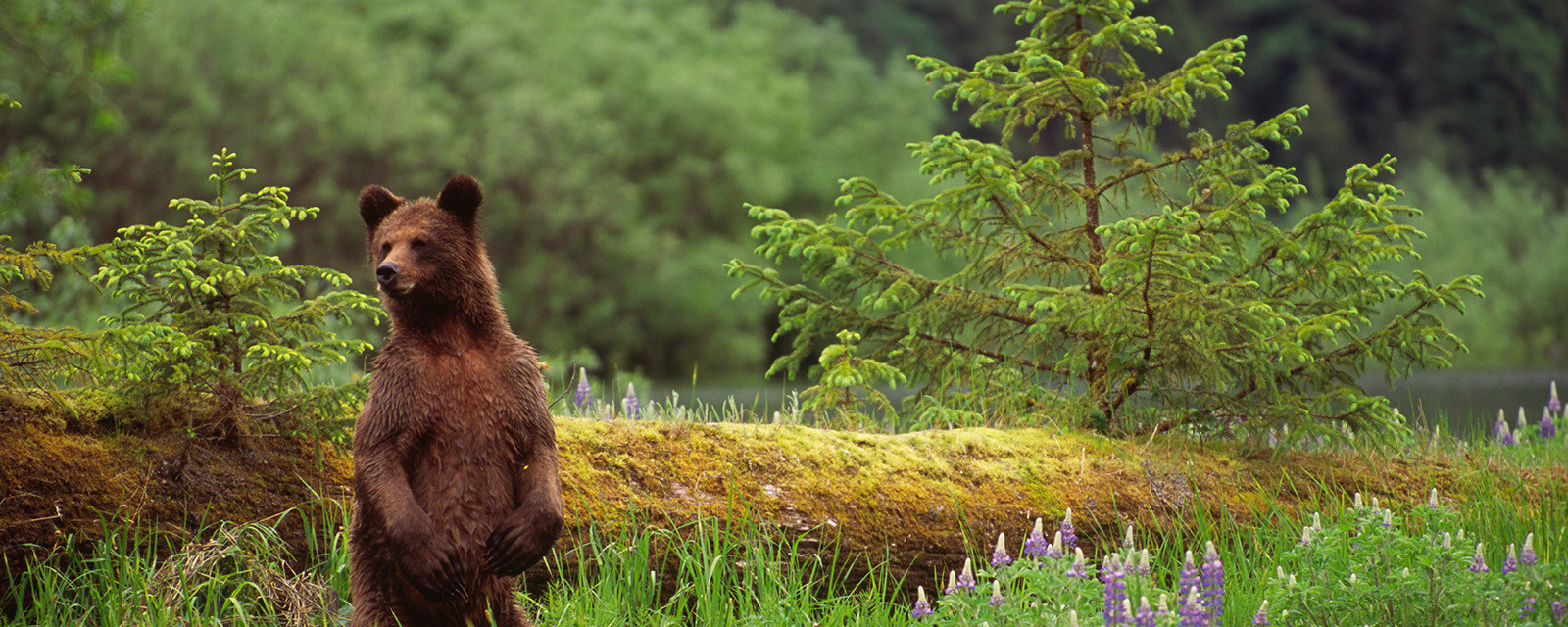Boosting Safety Through Partnerships: Bear Spray & Training Programs

Table of Contents
The Importance of Comprehensive Bear Spray Training
Effective bear spray use is paramount to personal safety in bear country. A comprehensive bear spray training program goes beyond simply knowing how to deploy the canister; it encompasses understanding bear behavior, implementing preventative measures, and mastering proper spray techniques.
Understanding Bear Behavior & Encounters
Different bear species exhibit varying behaviors. Grizzly bears, for example, are generally more aggressive than black bears, though both species can be dangerous if threatened or surprised. Understanding these differences is crucial. Bear encounters can range from defensive displays (a bear raising on its hind legs to appear larger) to predatory attacks (a surprise attack motivated by hunger). Recognizing signs of bear activity, such as tracks, scat, or claw marks, is vital for taking preventative measures.
- Avoid feeding bears: Never intentionally feed or approach bears. Food attracts bears and creates dangerous situations.
- Store food properly: Use bear-resistant canisters or hang food from trees properly to prevent attracting bears to your campsite.
- Make noise while hiking: Talk, sing, or use bear bells to alert bears to your presence and avoid surprising them.
- Travel in groups: Hiking with others significantly reduces your risk of a bear encounter.
Proper Bear Spray Deployment Techniques
Knowing how to use bear spray is as important as having it. Effective deployment requires considering distance (aim for 20-30 feet) and wind direction (wind can blow the spray away from the target). Practice is key; familiarity with your spray's mechanism and how it functions under pressure is vital. Different bear sprays have varying ranges and effectiveness, so choosing the right one and understanding its limitations is crucial.
- Practice drills: Conduct regular practice drills to ensure you can quickly and effectively deploy the spray.
- Keep spray accessible: Carry your bear spray in an easily accessible location, such as a hip holster or readily available pocket.
- Understand spray limitations: Bear spray is effective, but not foolproof. It's a deterrent, not a guaranteed solution.
Beyond the Spray: Additional Safety Measures
While bear spray is a vital component of wilderness safety, it's not the only tool. A layered approach enhances safety significantly. Carrying additional safety equipment, such as bear bells, a whistle, and a first-aid kit, further reduces risks. Hiking in groups provides an additional layer of safety and support in case of an emergency.
- First aid kit: Carry a well-stocked first-aid kit to address minor injuries.
- Communication devices: Bring a satellite phone or personal locator beacon (PLB) for emergencies where cell service is unavailable.
- Awareness of surroundings: Pay close attention to your surroundings and be aware of potential bear habitats.
Effective Partnerships for Delivering Bear Spray Training
Effective bear spray training programs are the result of collaboration between various stakeholders. Partnerships between manufacturers, outdoor organizations, and safety experts ensure high-quality training is widely accessible.
Collaboration between Manufacturers and Outdoor Organizations
Bear spray manufacturers play a vital role in promoting safe practices. Partnerships with organizations like hiking clubs, national parks, and conservation groups enhance training accessibility. Manufacturers can provide educational materials, sponsor workshops, and offer support to local instructors. Outdoor organizations, with their vast reach and understanding of wilderness environments, play a crucial role in disseminating information and promoting safe practices to their members.
- Joint workshops: Collaborate on workshops and seminars combining theoretical knowledge with practical drills.
- Sponsored events: Manufacturers can sponsor events and provide bear spray at a discount to participants.
- Educational resources: Create and distribute free online resources and brochures.
The Role of Wilderness Safety Experts
Certified instructors are critical to delivering high-quality bear spray training programs. Their expertise ensures participants learn effective techniques and understand bear behavior. Incorporating real-life scenarios and practical exercises during training helps participants internalize safety procedures. Ongoing professional development for instructors is vital to ensure training aligns with the latest safety guidelines and best practices.
- Certification programs: Establish recognized certification programs for bear spray instructors.
- Continuing education: Require instructors to complete periodic refresher courses to update their skills and knowledge.
- Updated safety guidelines: Training programs must reflect the most up-to-date guidelines and research on bear safety.
Accessing and Utilizing Bear Spray Training Programs
Finding a reputable bear spray training program is crucial. Ensure that the training aligns with your needs and the region you plan to visit.
Finding Reputable Training Programs
Look for programs led by certified instructors and organizations with a strong safety track record. Check online reviews and seek recommendations from experienced hikers. Contact local outdoor organizations or national parks for information on available courses.
- Check certifications: Verify the instructor's certifications and experience.
- Read reviews: Check online reviews from previous participants to gauge the quality of the program.
- Contact local outdoor organizations: Many local outdoor organizations offer or can recommend bear spray training programs.
Ongoing Learning & Refreshers
Bear safety knowledge is constantly evolving. Periodic refresher courses are crucial for maintaining proficiency. Regular practice drills, reviewing educational materials, and staying updated on new guidelines are vital.
- Regular practice: Conduct regular practice drills to maintain proficiency in bear spray deployment.
- Update on new guidelines: Stay informed on updated safety guidelines and best practices.
- Review materials: Periodically review training materials to refresh your knowledge.
Conclusion
Effective bear spray training programs are vital for enhancing wilderness safety. Partnerships between bear spray manufacturers, outdoor organizations, and wilderness safety experts are crucial in delivering comprehensive, accessible training that empowers individuals to confidently and safely enjoy the outdoors. By participating in reputable bear spray training programs, and maintaining a proactive approach to wilderness safety, you significantly reduce your risk of negative bear encounters. Find a bear spray training program near you today and invest in your safety!

Featured Posts
-
 Taylor Swift And Blake Lively Friendship Fracture Amid Legal Dispute
May 22, 2025
Taylor Swift And Blake Lively Friendship Fracture Amid Legal Dispute
May 22, 2025 -
 Core Weave Inc Crwv Stock Market Performance A Review Of Last Weeks Activity
May 22, 2025
Core Weave Inc Crwv Stock Market Performance A Review Of Last Weeks Activity
May 22, 2025 -
 Hai Lo Nho Tren Dau Usb Ban Co Biet Chung La Gi Khong
May 22, 2025
Hai Lo Nho Tren Dau Usb Ban Co Biet Chung La Gi Khong
May 22, 2025 -
 Peppa Pigs Family Grows Gender Reveal Sparks Online Discussion
May 22, 2025
Peppa Pigs Family Grows Gender Reveal Sparks Online Discussion
May 22, 2025 -
 Saskatchewan Political Panel Reacts To Federal Leaders Comments
May 22, 2025
Saskatchewan Political Panel Reacts To Federal Leaders Comments
May 22, 2025
Latest Posts
-
 Popular Rock Band Frontman Dies At 32 Fans Mourn
May 22, 2025
Popular Rock Band Frontman Dies At 32 Fans Mourn
May 22, 2025 -
 Dropout King Singer Adam Ramey Dies At 31 A Tribute
May 22, 2025
Dropout King Singer Adam Ramey Dies At 31 A Tribute
May 22, 2025 -
 Adam Ramey Dead At 31 Dropout King Singer Passes Away
May 22, 2025
Adam Ramey Dead At 31 Dropout King Singer Passes Away
May 22, 2025 -
 Wordle Game 363 Hints Clues And The Answer March 13th
May 22, 2025
Wordle Game 363 Hints Clues And The Answer March 13th
May 22, 2025 -
 Music World Mourns Dropout Kings Adam Ramey Passes Away At 32
May 22, 2025
Music World Mourns Dropout Kings Adam Ramey Passes Away At 32
May 22, 2025
